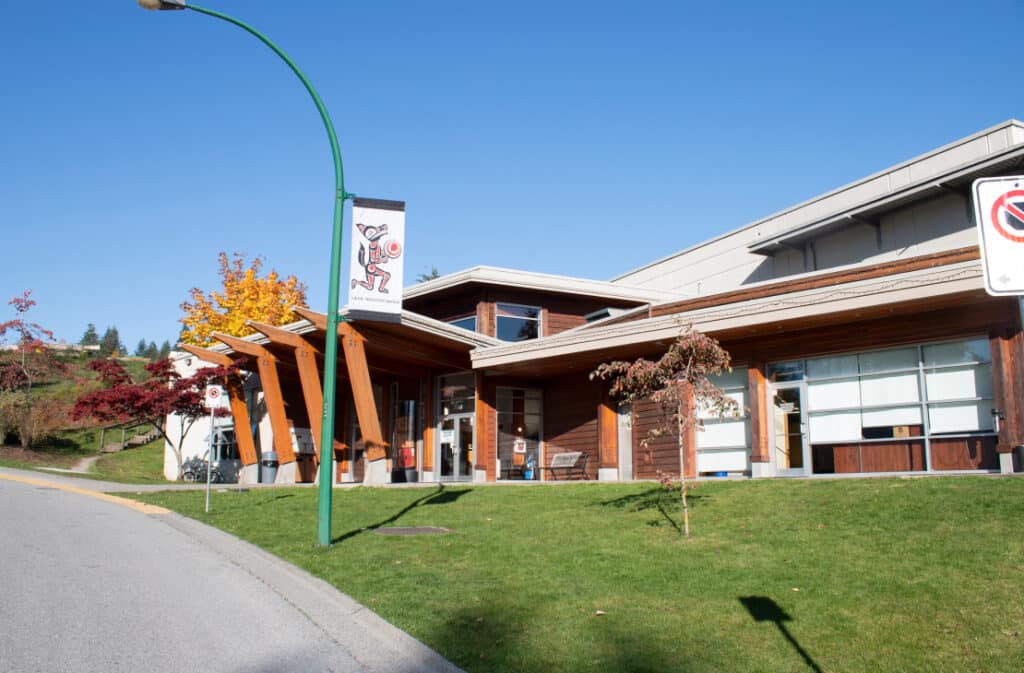Our name in hən̓q̓əmin̓əm̓ is səlilwətaɬ (Tsleil-Waututh Nation).
We listen to our səlilwətaɬ Elders—they are the Knowledge Keepers of our history—and sustain connections between our youth and Elders to keep our TWN culture alive.
We have incorporated traditional education, language, and culture into our childcare, in response to what our community, leadership, and parents requested, to raise awareness from an early age. We have traditional art, drumming, singing and field trips, plus opportunities for Elders and youth to interact.
“We want our community members to thrive in our culture and traditions, even as we live in an ever changing modern world, because this keeps us grounded to our values and who we are as Tsleil-Wautt people. Our aspiration is to see our children and grandchildren grow up healthy and happy, so life becomes a journey they travel without the struggles our Ancestors had to deal with.”
Former Chief Maureen Thomas
Our Tsleil-Waututh Language Program is helping to revitalize our hən̓q̓əmin̓əm̓ language. With no living fluent speakers, we used remaining records, documentation, and linguistic resources for the Downriver Hunq’eme’nem/hən̓q̓əmin̓əm̓, while also requesting assistance from Vancouver Island speakers (who call the language Həl̓q̓əmin̓əm̓).
Please note that the initial letter of every hən̓q̓əmin̓əm̓ word is lower case. We do not use upper case symbols in our orthography.
Listen to several audio files of hən̓q̓əmin̓əm̓ words by Gabriel George, səlilwətaɬ Knowledge Keeper, below:
We are using cutting-edge language learning techniques to attain our short-term goal of five fluent, proficient second-language speakers of hən̓q̓əmin̓əm̓. To date, we have:
-
- Three community members who are mid to high-level conversant speakers
-
- Four language interns who are beginning to mid-level conversant speakers
We are confident, based on progress so far, of attaining our longer-term goal to raise a generation of first-language speakers. We’ve introduced language classes in our childcare, sharing basic words and phrases with all children, in staff/community language classes, and in language immersion camps.

